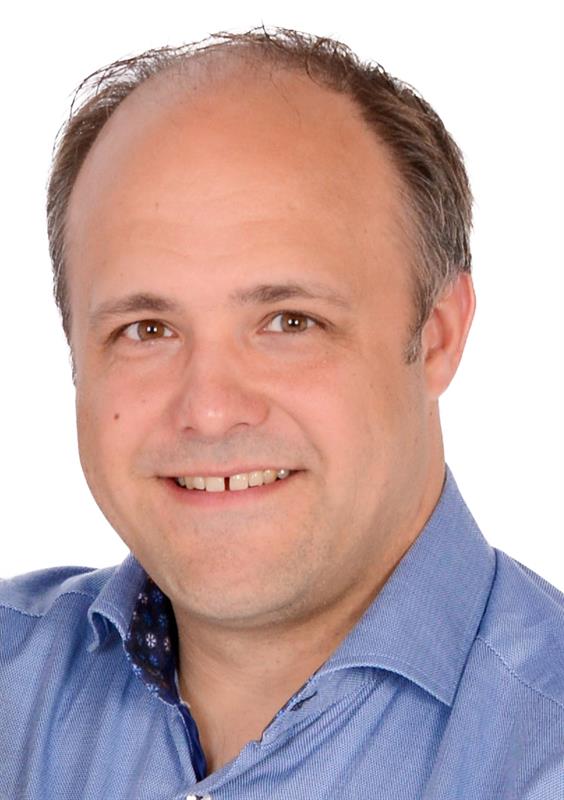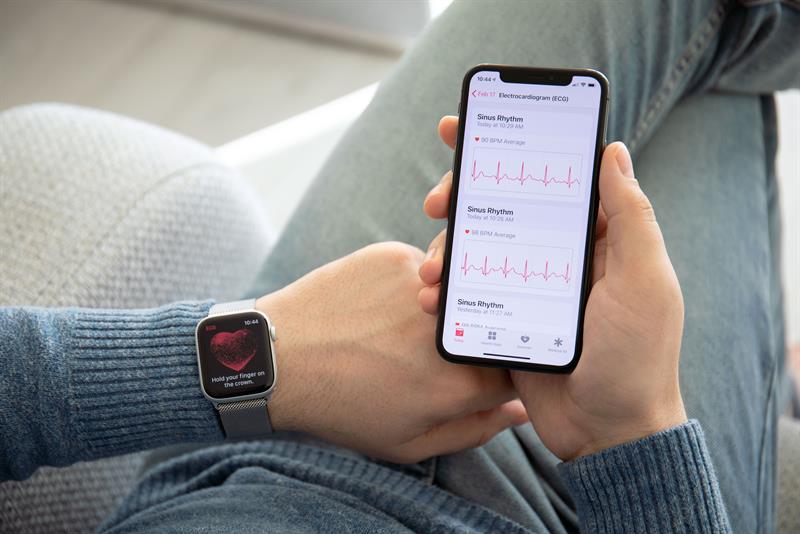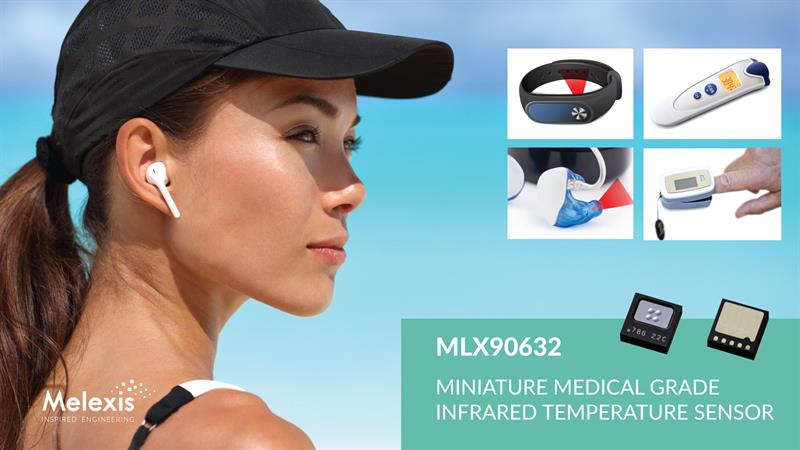Technology has transformed medicine, helping healthcare professionals better identify and treat illness or disease. Sensors play a vital role in numerous devices – from x-ray imaging to thermometers – and further development to achieve new capabilities, functionalities or miniaturisation promises to unlock new heights for these components.
So, where has this renewed focus come from? Filip Frederix, Head of Business Imaging at ams, credits the rise of the ‘P4’ approach to medicine. This is made up of four core pillars: preventative, participatory, predictive and personalised. Technology, medical and pharmaceutical companies alike are promoting this as a natural evolution of reactive disease care.

“To enable these models, you need to have a lot more sensors so you can monitor your health at home when you're not even ill. Then if you look what predictive health means, it also requires some artificial intelligence and big data analysis to make sense of certain symptoms or readings. Here you need to have very accurate sensors that can be used at home.”
Preventative health, Frederix explained, will only be cost efficient if health monitoring can be carried out without frequent interactions with healthcare professionals. If patients can monitor their blood pressure at home, for example, it becomes possible to have a system where patients only need a GP appointment if they are ill, or if it is likely they will become ill. To take this a step further, health monitoring devices must be able to identify that patients require treatment at a much earlier stage. If that possibility is realised, healthcare costs could be significantly reduced.
Meeting stringent requirements

Sensor manufacturers have had to invest in research and development to ensure their products are able to meet medical requirements. Luc Buydens, Product Manager, Melexis, highlighted how medical sensors must have much higher level of accuracy than those used in other applications like industrial or air conditioning. In healthcare, sensors must have an accuracy within 0.1 or 0.2°C, compared to other applications where accuracy within 1°C is sufficient.
Buydens added that health sensors do have one benefit. To meet automotive or industrial requirements, sensors often need to be able to tolerate extreme temperatures – whether that’s as low as -40°C or as high as 250°C. Medical sensors do not need to reach those extremes, after all a reading of 250°C would indicate “much bigger problems”!
Various sensors can be used to monitor health, but certain types are being used much more widely. According to Frederix, optical sensors have been used in various medical applications due to their sensitivity and high accuracy. Advances are opening up the possibility of lab-based quality in a point of care setting. More specifically, infrared optical sensors are widely used to measure heart rate and blood oxygen levels.
Joining the dots
Medical technology developments are triggering a new era for consumer health products, and wearables is one area where innovation has flowed in that direction. Frederix explained that these are no longer used only by sports people and techies. “Wearables now also try to give you a bit more medical data, with the possibility to connect to a healthcare professional or even to a medical company. There are even smart insulin pens that give patients feedback on how well the injections have been administered. The growth of smart systems like this will help drive accurate, integrated and cost-effective sensors.”

A close interconnection between the healthcare and wearables markets will be beneficial to both sides. Overlapping development priorities could be explored through joint research projects.
Manufacturing fit-for-purpose sensor components has been critical in unlocking a lot of these possibilities. Vinau explained how ams updated certain production processes to ensure its sensor components were fit for medical applications. The company calibrates every individual sensor during its production flow, as well as considering the effects of the soldering the sensor into a PCB. He said, “The soldering process into a semiconductor device, especially into a WLCSP (wafer level chip scale package), affects the performance of the sensor. We have to ensure that, after soldering into a PCB, the accuracy is still within the required quality standards.”
Fitting sensors into new applications is also pushing sensor manufacturers to develop sensors that are cheaper and smaller than ever before, but the pressures are not only from a technical perspective. Frederix added that there are also business pressures at play. He said, “There are also infrastructural challenges that need to be overcome to build a healthcare system that allows patients to submit readings and then access treatments at home. That could mean medicines being delivered at home or in a pharmacy, for example, instead of always needing to visit a GP. There are technical challenges, but we also need a system that enables these things.”

Jose Vinau, Director of Engineering at ams, also explained that, as a semiconductor company, building the electronics below the sensor is the easy part given ams has been doing exactly that for almost 40 years. The challenge comes from “how to integrate [the sensor] into our wafer manufacturing process”. The company has found it need to “identify the sensing material – which could be chemical or a MEMS process, for example – and then integrate that into our packing process into our wafer manufacturing”.
He added this also poses challenges in terms of production testing. Existing integrated circuit undergo a test that involves charge, for example, so that process is one that is very familiar to ams. What is new with sensors used for medical applications, is the need for more tailored testing during production that can guarantee the quality. The company has already met this challenge for existing sensors, and Vinau explains that this push to improve production testing is an issue across the market.
Clinical trials
Frederix also highlighted a related challenge that comes further down the development timeline. Sensors intended for use within medical devices face further assessment before they are certified for such applications. He said the sensor “also needs to be validated in a clinical environment. If you look to our blood pressure, optical and heart rate monitoring modules, we had to [conduct] a clinical trial to prove the accuracy”.
That requirement to guarantee accuracy is echoed by Melexis’ Buydens. He said, “Authenticity and traceability is getting more and more important. Certain applications also require sensors that can be sterilised or are biocompatible.”
He explained that he means biocompatible in the sense that if the sensor needs to be worn on the skin, it should be made from hypoallergenic materials. One example is a new device that checks blood glucose levels in patients with diabetes where a probe is inserted underneath the skin that regularly monitors blood glucose levels. In that application, biocompatibility is fundamental to its functionalities.
Development in these areas is what will help sensor manufacturers and their partners achieve the promise of healthcare that meets those four key pillars highlighted earlier. Healthcare that is preventative, participatory, predictive and personalised rests on developing cost-effective sensors that can play a vital role in treating or preventing illness and disease.














